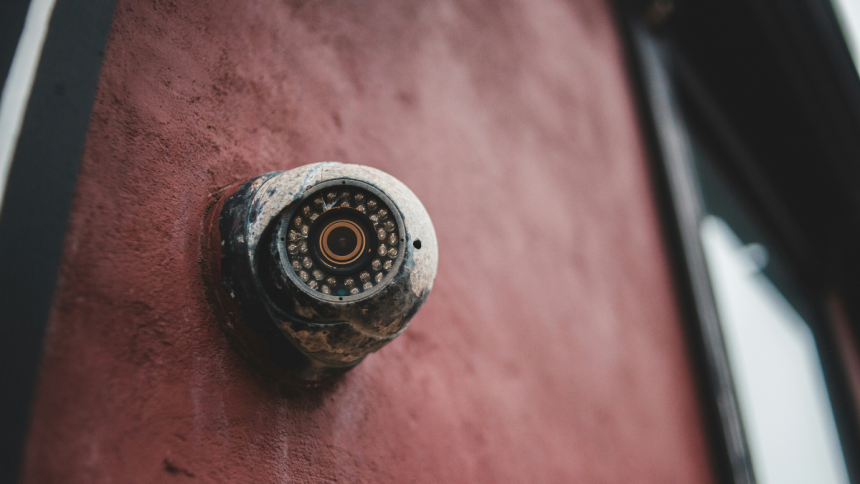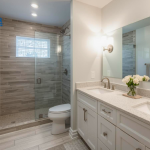A safer home doesn’t have to cost a fortune when you combine modern hardware with a bit of hands-on setup. Today’s smart sensors and wireless panels are designed to be reliable, modular, and friendly to install, so you can scale protection without paying for invasive wiring or hefty labor fees. That’s why many homeowners start by researching the average cost to install a security system and then make smarter choices that trim both upfront and ongoing expenses.
Smart Sensors: Small Devices, Big Savings
Smart door, window, and motion sensors have matured into highly efficient guardians that are simple to place and maintain. Because most models run on long-life batteries and use encrypted wireless protocols, you avoid the costs of hiring an electrician to run cable through walls. The compact form factor also means you can deploy more coverage where it matters—entry points, hallways, and high-value rooms—without aesthetic trade-offs or specialist help.
Cost efficiency comes from targeting risk zones first and expanding as your budget allows. Start with exterior doors and first-floor windows, add a motion sensor to a central corridor, and you’ve addressed the majority of common intrusion paths. As finances permit, layer in glass break sensors for rooms with large panes or sliders. This phased approach keeps cash flow predictable because you’re buying only what you need now while preserving the option to grow later.
Smart sensors also reduce false alarms and service visits, which saves money over the life of the system. Adjustable sensitivity, pet-immune motion detection, and app-based alerts let you fine-tune behavior without waiting for a technician. If a sensor needs a battery, your phone tells you well in advance; if a device loses contact, you can repair it in minutes. Fewer surprises and fewer truck rolls translate directly into lower ownership costs.
Wireless Control Panels: Cutting the Cord on Installation Costs
Legacy alarm panels often required dedicated wiring, phone lines, and wall cutting—each step adding labor and clean-up costs. Wireless control panels change the equation by consolidating cellular or Wi-Fi connectivity, backup power, and user interface into an all-in-one hub. You power it from a nearby outlet, enroll your sensors, and begin monitoring—often in under an hour. That simplicity removes a large chunk of traditional installation fees.
A modern panel’s modularity also helps you avoid paying for capabilities you won’t use. If you don’t need home automation on day one, you can skip those accessories and add them later when they make financial sense. If your home has spotty Wi-Fi in one area, you can position the panel for best reception without calling a contractor to move wiring. Flexibility is a form of savings because it prevents premature upgrades and sunk costs.
Software updates are another underappreciated cost win. Instead of replacing a panel to get new features, many wireless systems update over the air. You benefit from better device compatibility, interface improvements, and security patches without buying new hardware. Over a typical five-year span, those incremental updates can defer replacement and keep your system current at a fraction of the price of a rip-and-replace cycle.
DIY Mounting Hacks: Faster Installs, Cleaner Walls, Lower Bills
You don’t need a workshop full of tools to mount sensors securely and neatly. Many devices are designed for peel-and-stick installation using high-bond adhesives that hold to painted walls, door frames, or window jambs. With a quick surface clean and a firm press, a contact sensor can be placed in seconds. If you later remodel or move, careful removal and a dab of touch-up paint are usually all that’s required—no patching from drilled holes or conduit clips.
For heavier items like siren or specific cameras, consider using screw-in drywall anchors that don’t require studs. These anchors distribute weight and minimize damage, making repositioning straightforward if you change layouts or improve coverage. When drilling is necessary, a low-profile cable clip or paintable cord channel keeps power leads tidy and unobtrusive, helping you achieve a professional look without professional labor rates.
Placement strategy doubles as a money saver. Mount motion sensors at 6–8 feet, angled to cover entry paths rather than open floors, which increases detection with fewer devices. Position door contacts on the most frequently used doors first, then add lower-priority openings only if your risk profile warrants it. By pairing smart placement with removable mounts, you can experiment and refine coverage before committing, so every device you buy performs as expected.
Optimizing Monitoring and Ownership Costs
Hardware is only half of the total cost; monitoring and maintenance determine your long-term costs. Look for plans that match how you actually use the system, whether that’s self-monitoring with push alerts, affordable professional monitoring, or a hybrid that escalates only when needed. Transparent month-to-month options can keep you flexible, while cellular backup ensures reliability without landline fees.
Device standardization also reduces ownership costs. Choosing sensors and panels that support widely used protocols helps you avoid vendor lock-in and protects your investment if you switch providers later. When a sensor fails in year three, you can replace it with a compatible model rather than overhaul the entire setup. That parts-level agility turns potential big repairs into small, predictable purchases.
Finally, plan for upkeep, such as batteries and occasional testing. A semiannual check—opening a door contact, walking past a motion sensor, confirming siren and app alerts—catches issues early. Buying batteries in bulk, labeling install dates, and setting reminders keep devices reliable without emergency callouts. Routine maintenance is inexpensive, but it pays off by preventing the rare but costly incident when a dormant fault coincides with a real event.
When to Call in a Pro—and Still Save
DIY doesn’t have to be all-or-nothing. If you’re comfortable placing sensors but hesitant about panel setup, you can handle the mounting and let a professional walk you through programming remotely. This hybrid approach preserves most of the installation savings while ensuring the system reports correctly and follows best-practice configurations. Think of it as targeted expertise instead of a full-service bill.
Complex layouts sometimes benefit from a short consultation to identify blind spots or interference sources. A one-time site survey can inform your DIY plan, so you buy the right devices the first time. If you later expand to include smoke detectors, water leak sensors, or smart locks, that initial blueprint helps you add components efficiently without duplicating effort or expense.
Resale value is another reason to combine DIY efficiency with professional polish. A tidy installation, clearly labeled zones, and a documented sensor map can be a small selling point for future buyers. By keeping your setup modular and well organized, you enjoy the savings now and preserve optional value later, without paying for a premium “builder package” up front.
Conclusion
The most cost-effective security systems today blend smart sensors, wireless control panels, and simple DIY mounting to deliver robust protection without premium installation fees. By phasing coverage, standardizing on compatible gear, and handling straightforward mounting yourself, you can reduce both upfront costs and long-term ownership expenses. Whether you go fully DIY or opt for a hybrid with targeted professional input, the key is to buy intentionally, place devices strategically, and maintain consistently. So your home stays safer while your budget stays intact.
Lynn Martelli is an editor at Readability. She received her MFA in Creative Writing from Antioch University and has worked as an editor for over 10 years. Lynn has edited a wide variety of books, including fiction, non-fiction, memoirs, and more. In her free time, Lynn enjoys reading, writing, and spending time with her family and friends.















